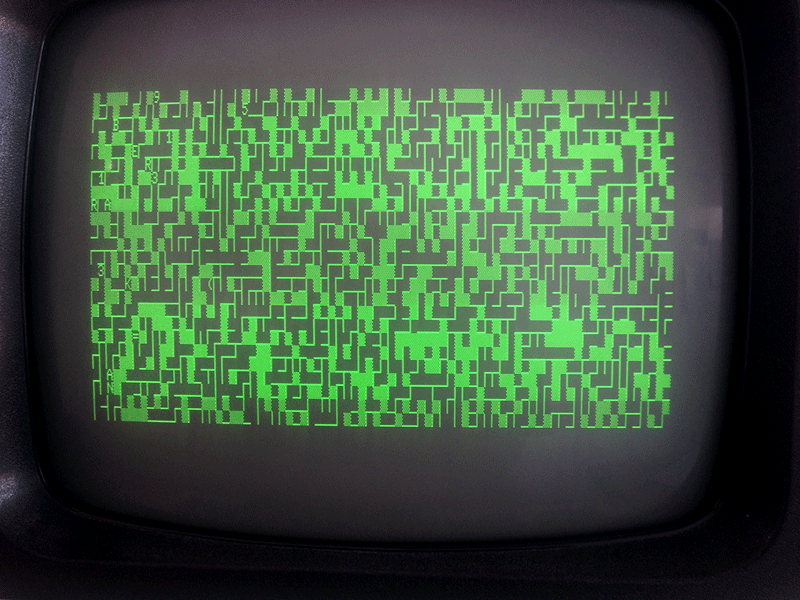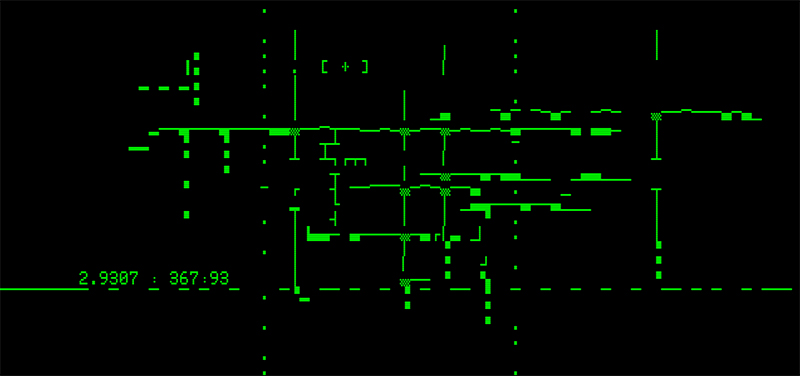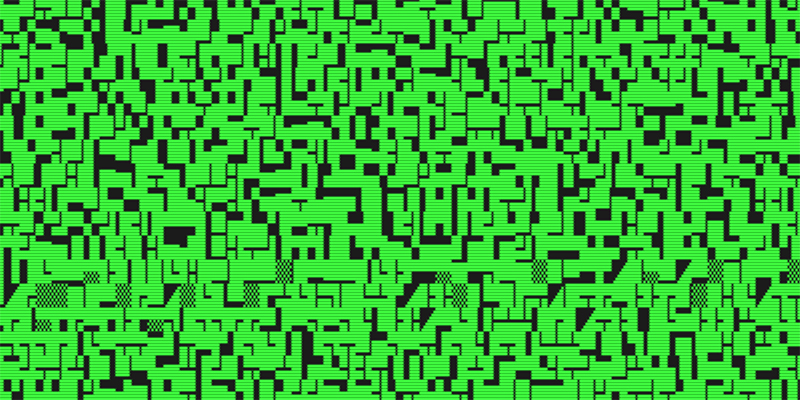
- preliminary data. work in progress -
When artists began to explore computers as medium in the 1960’s, technology was limited and the resulting minimalism in expression was a necessity. Half a century later, teams of thousands of programmers work on high-end games and movies, utilising clusters of the fastest computers available. The sight of a green CRT display once was the promise of an exciting future, now it is nostalgic.The 8032 Series will explore the beauty of simple graphics and sound, using outdated technology from the early 1980’s. It is an exercise in reduction, a reenactment of the past, informed by the artistic mindset of the 21st century. The resulting works will be either prints, live performances or audiovisual recordings or a mix of all of those.
The name of the project is derived from the computer used to create the images and sounds, a Commodore CBM 8032 desktop computer from 1980, programmed directly in machine language, the code which is used by the microprocessor itself, with no layers of interpretation in between, literally representing the data flowing through the chip. The computer is several thousand times less powerful than any machine today. It only supports a very limited type of graphical display: 25 lines of 80 characters can be displayed on its green CRT screen. The 255 possible characters are defined by Commodore’s own petASCII character set and include graphical symbols. The works created as part of the 8032 Series will explore this unique character set. The CBM 8032 has extremely limited possibilities to create sound via single 1 bit output channel. However, by writing clever code, it is possible to produce real time animations and raw musical results at the same time. The 8032 Series project is fuelled by my multidimensional fascination for computer technology, enhanced by my stay at Silicon Valley's Stanford University in 2013. The Commodore 8032 was released in 1980, at a time when a lot of groundbreaking work was done that shaped the world we live in. The invention of the microprocessor a few years earlier lead to such diverse results as home computers, game consoles and also digital synthesizers. The development turned hippies into computer nerds, and later into billionaires, it had impacts on popular culture on many levels from cinema to poetry, from music to graphics design.I grew up, swimming on the tide of that wave, experiencing the changes whilst they happened. My first practical encounter with a computer as a teenager was with a smaller version of the 8032, the 4016, both running with a CPU that belongs to the last generation that was still meant to be programmed by human beings. When I look at circuit diagrams of machines built during that period, I experience a time travel to an era in which developers had to came up with amazingly elegant solutions for problems, since they had to deal with very limited resources. The computer code and the hardware represents Bauhaus’s theme of form follows function out of necessity. There is amazing beauty in this. I experience it, when coding the graphics and sound routines for the 8032 Series project.
It could have all been done exactly like this more than 30 years ago. What changed is not the medium, it is the perspective.
The 8032 Series is work in progress. It includes many steps, it forces me to learn 6502 machine language, to understand the circuit board design of the 8032, to put myself inside the heads of the people who invented that machine. It requires building new hardware around it. It requires thinking about the generation of sound and graphics in terms far more abstract than with any contemporary tool. The 8032 Series most likely will consist of very different works in various media. The travel into the future past has just begun. Expect updates here and on the tech blog from time to time...Very special thanks to Dave Stevenson [link], Ralf Suckow, Robin Harbron, Garth Wilson [link] and Matt Hughes for technical insight, hardware and support.

